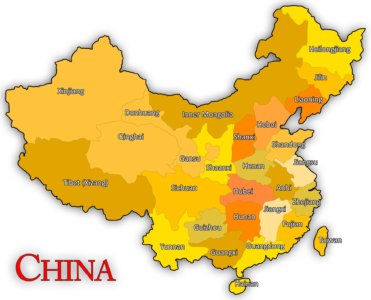According to a report by the World Bank, China is well advanced in building a national innovation system (NIS) capable of supplying the innovation and technologies needed for a growing economy that is productivity-led.
Currently, the country’s NIS focuses on discovering new innovations and accelerating the diffusion of technologies throughout to support a rapidly increasing innovation capacity. Yet gaps remain between China and high-income countries. The global innovation index—developed by the World Intellectual Property Organization (WIPO), INSEAD, and Cornell University—is the most positive, indicating that China’s innovation capacity has been improving steadily. China is moving up in cross-country rankings, from 29 in 2011 to 17 in 2018, and it is the highest-ranking middle-income country. It was the first middle-income country to join the 20 most innovative countries (Cornell University, INSEAD, and WIPO 2016). China’s improvements stand out among comparable countries, which have experienced few improvements or a decline in their ranking. China also has improved its innovation quality and now is ranked 17.
RELATED: Chinese Biotech Beigene Raises Largest-Ever Follow-On Offering
In contrast to improvements in the global innovation index, China’s innovation assessment by the World Economic Forum has improved little over the years. In 2016/17, China ranked 28 out of 144 countries on overall competitiveness and 74 on technological readiness, compared with 27 and 78, respectively, in 2010/11. According to the information and communication technology (ICT) development index for 2016, China was ranked 81, behind Venezuela and Bosnia and Herzegovina, although this was an improvement over its ranking of 84 in 2015. The Bloomberg index of innovative economies ranks China 20, between Canada and Poland. China scores high on patent density (7) and high technology density (9) and is in the middle of the range on R&D intensity (15) and manufacturing value added (19); however, it is near the bottom (43) on tertiary efficiency, productivity, and researcher concentration.

R&D investments and number of patents have risen rapidly in recent years. China spent 2.18% of gross domestic product (GDP) on R&D in 2018, compared with the Organisation for Economic Co-operation and Development (OECD) average of 2.4%. In 2013, China’s aggregate spending on R&D became the second highest in the world, after the U.S., and accounted for around 20% of global spending on R&D. R&D expenditures as a share of GDP are multiples above what is common for a country at China’s level of development.
In line with higher spending on R&D, China’s domestic patenting has increased dramatically over the last half decade. It has the world’s largest number of domestic patents, with more than 1.7 million domestic patents granted in 2016. In 2016, China filed the world’s third-highest number of applications under the Patent Cooperation Treaty (PCT), with two Chinese companies, ZTE and Huawei, the first and second most frequent. This makes China the third-largest applicant for international patents in 2016 and is likely to overtake second-place Japan soon.
China is also second only to the U.S. in the number of scientific publications. The quality of China’s research papers is also improving. According to Nature Index’s weighted fractional count of the quality of global research outputs, China is now second only to that of the U.S.
China’s enterprise sector accounts for approximately three-fourths of total R&D spending, above the OECD average of two thirds and also that of most middle-income countries. Enterprise sector spending includes R&D outlays of state-owned enterprises (SOEs), which in 2015 amounted to about one-third of the total, down from 55% in 2005. ICT producers accounted for about one-third of total R&D spending in China, followed by automobiles and transport and ICT services. The contribution of Chinese ICT to global innovation is growing; Huawei is the third-largest corporate R&D spender in the global ICT industry (and the only Chinese company on the list of the world’s largest R&D companies).
The top five Chinese companies accounted for almost 30% of total R&D spending in China, a higher proportion than among the top five companies in the U.S. and the European Union (EU), where they represented less than 20% of total spending. This indicates that, in China, enterprise research is more concentrated in the largest firms, and the majority of enterprises may be investing relatively little in R&D.
RELATED: Here Are Two ETFs Offering Exposure To Biotech In China
The average R&D intensity (defined as the ratio of R&D investment to total revenue) of all Chinese companies (among companies with at least €24 million in annual R&D spending) was only 2.8%, less than half of average spending in the U.S. (6.2 percent), indicating a sizable gap between many Chinese companies and their global counterparts, regarding investments in innovation and technology. However, among the world’s 2,500 most-R&D-intensive companies, R&D spending by Chinese companies grew 18.8% in 2017, compared with 7.2% in the U.S. and a 3% decline in Japan, suggesting that Chinese companies are catching up rapidly.
Multinationals have played a significant role in China’s international patenting, reflecting the increasing globalization of R&D. Multinational enterprises based in China helped to drive the rapid growth in U.S. patents through imported innovation platforms, including management, networks, and corporate structures that provide the necessary complementary factors within multinational corporations. This pattern is distinct from the pattern seen in South Korea, where the vast majority of international patents are registered by indigenous enterprises. The foreign share of domestic invention patents in China—patents granted by the State Intellectual Property Office (SIPO)—is sizable but declining, from 44% in 2001 to 25% in 2016. Given the significant share of domestic innovation carried out by foreign firms, it will be important to enhance local knowledge, product, and entrepreneurial spillovers.
Countries like Korea that have traditionally been less dependent on FDI, as well as countries like Singapore that have had much higher levels of FDI, have taken steps to enhance the capacity of indigenous firms to absorb technology spillovers, providing important lessons for China. China’s patents still lag those of frontier countries on a variety of measurements of quality, such as patent citations, retention rates, patent commercialization (as measured by patent out-licensing), and average number of claims. A key aspect of quality is China’s reliance on “utility” patents, which are less costly, easier, and faster to obtain but have a shorter duration of protection than invention patents. Utility models are useful to latecomers employing a catch-up strategy. Although other countries also offer utility patents, the vast majority of the world’s utility patents are filed in China (WIPO 2018). Utility patents granted in China have skyrocketed in recent years (figure 5.4, panel a), accounting for 43% of the stock of patent applications in 2016.
China’s Biotechnology Industry
The following was reported in “China’s Biotechnology Development: The Role of US and Other Foreign Engagement”
China’s biotech industry has been growing rapidly in the past decade but still remains less than a tenth the size of the U.S. biotech industry in terms of market size. China’s biologics market is estimated at 30 to 40 billion yuan ($4.7 to $6.2 billion) and their agricultural biotech market is around $8.1 billion, while estimates places those U.S. markets at $118 billion and $110 billion, respectively. Overall, the U.S. maintains its lead through world-class research training and strong governmental support of R&D, but China is seeking to close the gap through its top-down government strategy and coordination, talent recruitment programs, high R&D spending across the industry, and capacity for high-tech R&D.

China’s biotech sector is dominated by biologics and other medical technologies. The segment is growing quickly due to increasing demand and the high value of the products relative to traditional pharmaceuticals. While Chinese biotech companies develop few innovations (instead producing biosimilars or performing contract research and manufacturing), they still provide a high-tech and high-skill foundation for future innovation, with potential demonstrated in some cutting-edge technologies like CAR-T and CRISPR.
China’s drug approval policies create advantages for Chinese developers of biopharmaceuticals and other drugs. Drugs manufactured in China and drugs not previously approved outside of China receive fast-track review. The duration of market protection via data exclusivity for newly approved biologics is maximized when clinical trials are performed in China and the drug is not approved elsewhere.
Investment in the agricultural biotech segment is low in China, despite a stated goal of developing the technology. China does not grow much GM crop, with the exception of cotton for export. Regulatory burdens and lack of consumer support have led to a lack of GM commercial activity, although China is investing in GM research. The recent purchase of GM seed producer Syngenta by ChemChina may signal a turnaround in this market, although catching up to the U.S. in the foreseeable future is not likely due to the size of the lead the U.S. has.
China’s biotech sector is fueled by many commercial factors—such as a massive future market, cheap labor, and abundance of talent—but industrial and technology policies play an important role as well. China is pursuing a comprehensive, long term strategy to become a leader in biotechnology, especially medical biotechnologies. Biotechnology is named as a Strategic Emerging Industry, and plans such as Made in China 2025 and the 13th Five Year Plan prioritize its development. As a result of these and other policies, the Chinese government is supporting the biotech industry through investment in infrastructure, development of research parks, and recruitment of overseas talent.
China is following a strategy of using international resources to further the advancement of China’s own industries, including biotechnology, as emphasized in Made in China 2025. China is specifically targeting foreign capital as a mechanism to increase investment in Chinese technology companies, including biotechnology, to broaden their international footprint.
The future for China’s biotech industry continued includes advancement in medical biotechnology, especially in biologics, genomics, and molecular diagnostics. Chinese biologics companies may move further toward producing innovative drugs. Given investments in agricultural biotechnology R&D, this segment may begin to see commercialization should restrictive policies and attitudes change. Due to a sizable lead, though, the U.S. is not likely to lose its standing in the global biotech sector provided it maintains its investment in the industry.
References:
“China’s Biotechnology Development: The Role of US and Other Foreign Engagement. A report prepared for the U.S.-China Economic and Security Review Commission” February 2019.
World Bank Group, and the Development Research Center of the State Council, P. R. China. 2019. “Innovative China: New Drivers of Growth.” Washington, DC: World Bank. DOI: 10.1596/978-1-4648-1335-1. License: Creative Commons Attribution CC BY 3.0

